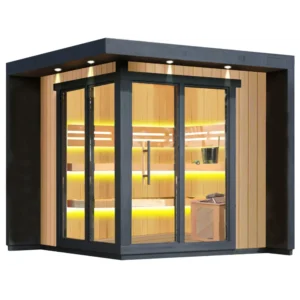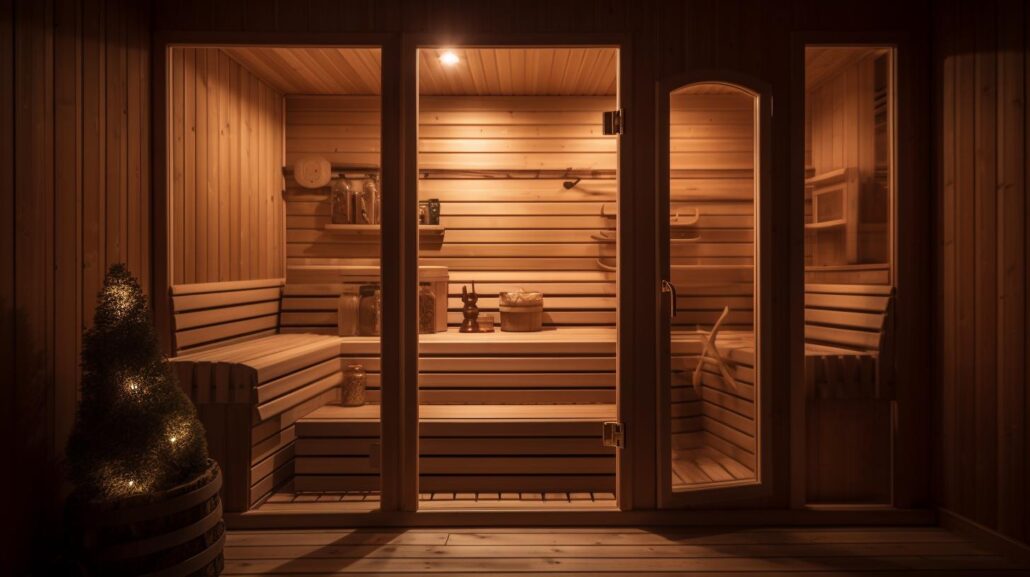If you’re planning to build or customize a sauna, one of the most important decisions you’ll face is selecting the right wood. The type of wood used in a sauna directly impacts its performance, durability, aesthetics, and even your comfort during use. In this article, we’ll explore the best wood types for saunas, their unique qualities, and why choosing the right wood is essential for creating the perfect sauna experience.
Why Is Choosing the Right Sauna Wood Important?
The wood in your sauna isn’t just about looks—it also determines how well your sauna retains heat, resists moisture, and lasts over time. Different wood types have unique properties that make them suitable for the high-heat and high-humidity environment of saunas. Picking the wrong wood can lead to warping, cracking, or even an uncomfortable sauna experience. By understanding the characteristics of popular sauna woods, you can make an informed decision that ensures your sauna performs well for years to come.
What Makes a Wood Suitable for a Sauna?
Not all wood types are suitable for sauna construction. The high heat and constant exposure to moisture require wood that can withstand extreme conditions. Here are the key characteristics to look for in sauna wood:
- Low Resin Content:Wood with minimal resin prevents sticky surfaces and unpleasant odors when exposed to heat.
- Low Heat Conductivity:This ensures the wood remains comfortable to touch, even in high temperatures.
- Durability:Sauna wood should resist warping, cracking, and decay over time.
- Non-Toxicity:Avoid any wood that emits harmful chemicals or odors when heated.
Key Considerations When Choosing Sauna Wood
| Characteristic |
Importance in a Sauna |
| Heat Resistance |
Ensures safety and comfort during sauna use. |
| Moisture Resistance |
Prevents warping and extends longevity. |
| Aesthetic Appeal |
Contributes to the overall sauna ambiance. |
The Best Wood Types for Sauna Interiors
Several wood types are commonly used in sauna interiors, each with its own distinct advantages. Choosing the best wood depends on your personal preferences, budget, and the type of sauna you’re building.
Popular Sauna Woods:
- Cedar
- Hemlock
- Aspen
- Spruce
- Pine
Each of these woods offers unique properties that cater to different needs. Let’s break them down further.
Why Is Cedar a Popular Choice for Saunas?
Cedar is one of the most commonly used woods in saunas, and for good reason. Its natural properties make it ideal for high-heat, high-humidity environments.
Key Benefits of Cedar:
- Naturally Moisture-Resistant:Cedar resists mold and mildew, making it suitable for humid sauna conditions.
- Pleasant Aroma:Cedar emits a soothing, natural scent that enhances the sauna experience.
- Durability:Cedar is highly resistant to warping, cracking, and decay.
“Cedar is a premium choice for saunas, offering both functionality and luxury.”
For outdoor saunas,
Western Red Cedar is particularly popular for its ability to withstand varying weather conditions.
Learn more about outdoor sauna manufacturers here.

Hemlock vs. Cedar: Which Is Better for Your Sauna?
While cedar is a favorite,
hemlock is another excellent option for sauna interiors. Comparing the two can help you decide which wood is best for your needs.
Hemlock:
- Cost-Effective:Hemlock is generally more affordable than cedar.
- Neutral Appearance:Its light, even tone works well for modern saunas.
- Durability:Hemlock is strong and long-lasting, though less resistant to moisture than cedar.
Cedar:
- Aromatic Properties:Cedar’s natural scent is a significant draw.
- Moisture Resistance:Superior to hemlock in humid conditions.
Conclusion: If budget is a concern, hemlock is a great choice. However, for luxury and moisture resistance, cedar often comes out on top.
Aspen and Its Unique Benefits as Sauna Wood
Aspen is a lesser-known but highly effective sauna wood. Its smooth, pale appearance and unique properties make it a favorite for those seeking a modern aesthetic.
Why Choose Aspen?
- Non-Allergenic:Aspen is free from resin, making it ideal for allergy sufferers.
- Heat Resistance:It stays cool to the touch, even at high temperatures.
- Elegant Appearance:Aspen’s light color brightens up any sauna interior.
Aspen is commonly used in
infrared sauna rooms, like the ones featured by
Veritas Solus.
Western Red Cedar: A Premium Option for Saunas
Western Red Cedar is often considered the gold standard for sauna wood. Its rich color, durability, and scent make it a top choice for premium sauna builds.
Benefits of Western Red Cedar:
- Naturally Resistant to Decay:Perfect for both indoor and outdoor saunas.
- Thermal Insulation:Keeps saunas energy-efficient.
- Aesthetic Appeal:Adds warmth and character to any sauna.
Explore
Western Red Cedar saunas for luxurious designs and unmatched quality.

Softwoods vs. Hardwoods: What to Use in Saunas?
When building a sauna, the choice between softwoods and hardwoods depends on your requirements.
Softwoods:
- Commonly used in saunas.
- Lightweight and easy to work with.
- Include cedar, hemlock, and spruce.
Hardwoods:
- Less common but offer unique aesthetics.
- Heavier and more expensive.
- Include alder and aspen.
Common Mistakes When Choosing Sauna Wood
- Using Treated Wood:Treated wood can release harmful chemicals when heated.
- Overlooking Moisture Resistance:Always choose wood that resists warping and decay.
- Prioritizing Cost Over Quality:Cheaper wood may lead to higher maintenance costs in the long run.
The Importance of Scent and Aesthetics in Sauna Wood
The wood you choose affects more than just functionality—it also sets the tone for your sauna experience. Cedar’s calming scent, for instance, can transform a sauna session into a therapeutic retreat.
FAQs: How to Maintain and Treat Sauna Wood
- How do I clean sauna wood?Use a mild soap and water solution to clean the surfaces. Avoid harsh chemicals.
- Can I treat sauna wood with oils?Yes, but only use oils specifically designed for saunas.
- How often should I maintain my sauna wood?Regularly inspect and clean the wood every few months to prevent buildup.
Key Takeaways
- Cedarand Western Red Cedar are top choices for moisture resistance and durability.
- Aspenis ideal for a modern, allergen-free sauna interior.
- Avoid treated wood and prioritize quality materials for long-term performance.
- Maintain your sauna wood regularly to prolong its lifespan.
For more insights on sauna construction and wood selection, explore
Veritas Solus sauna solutions.


